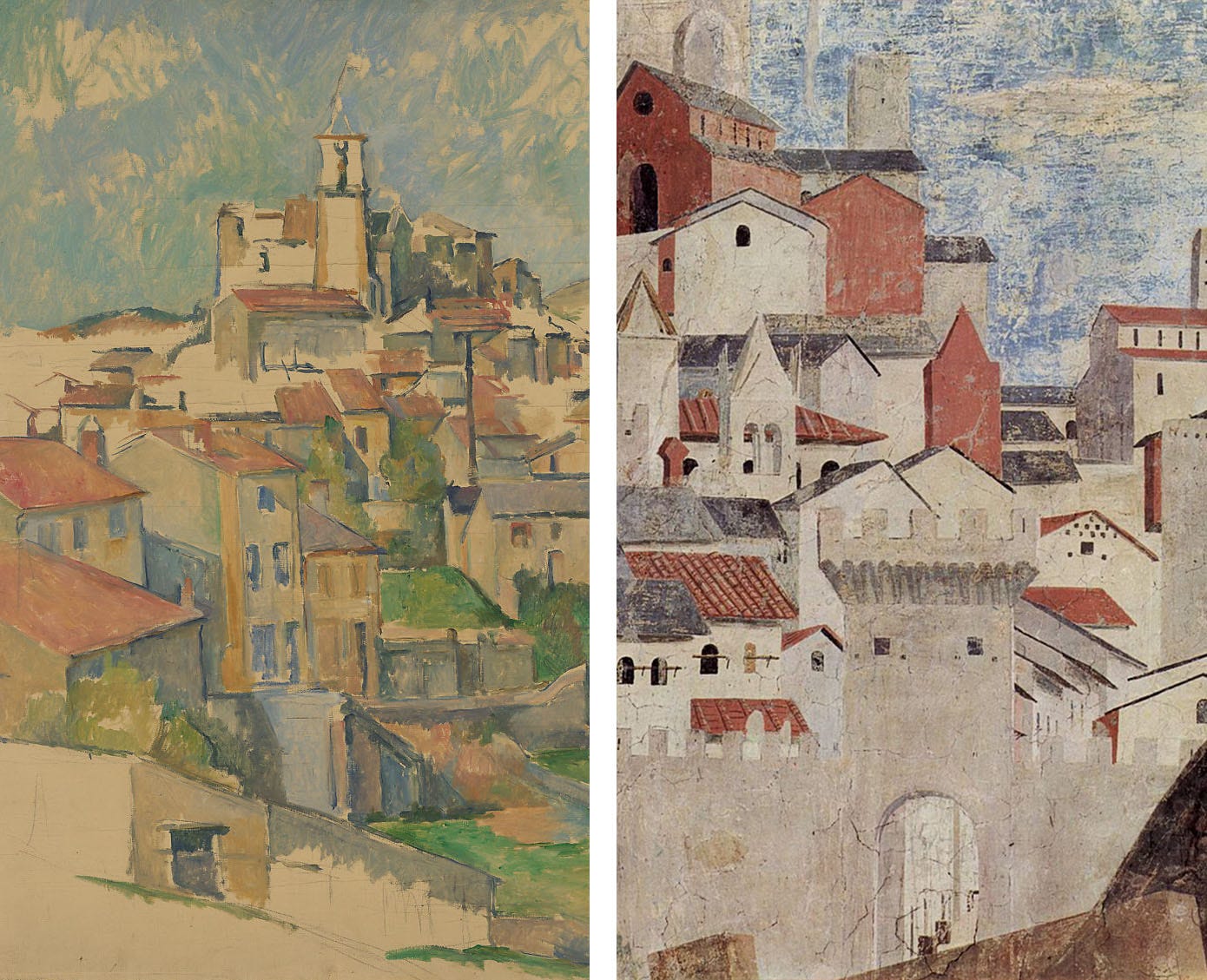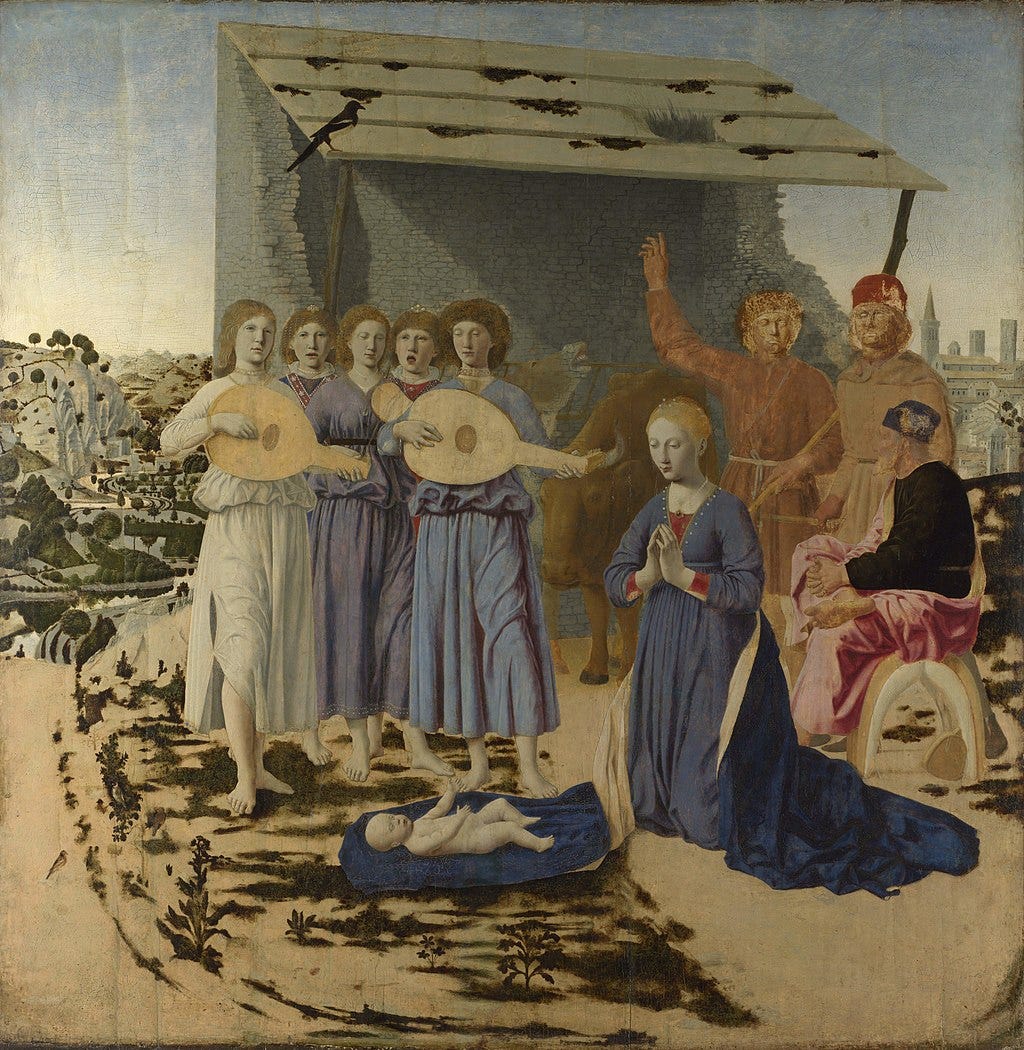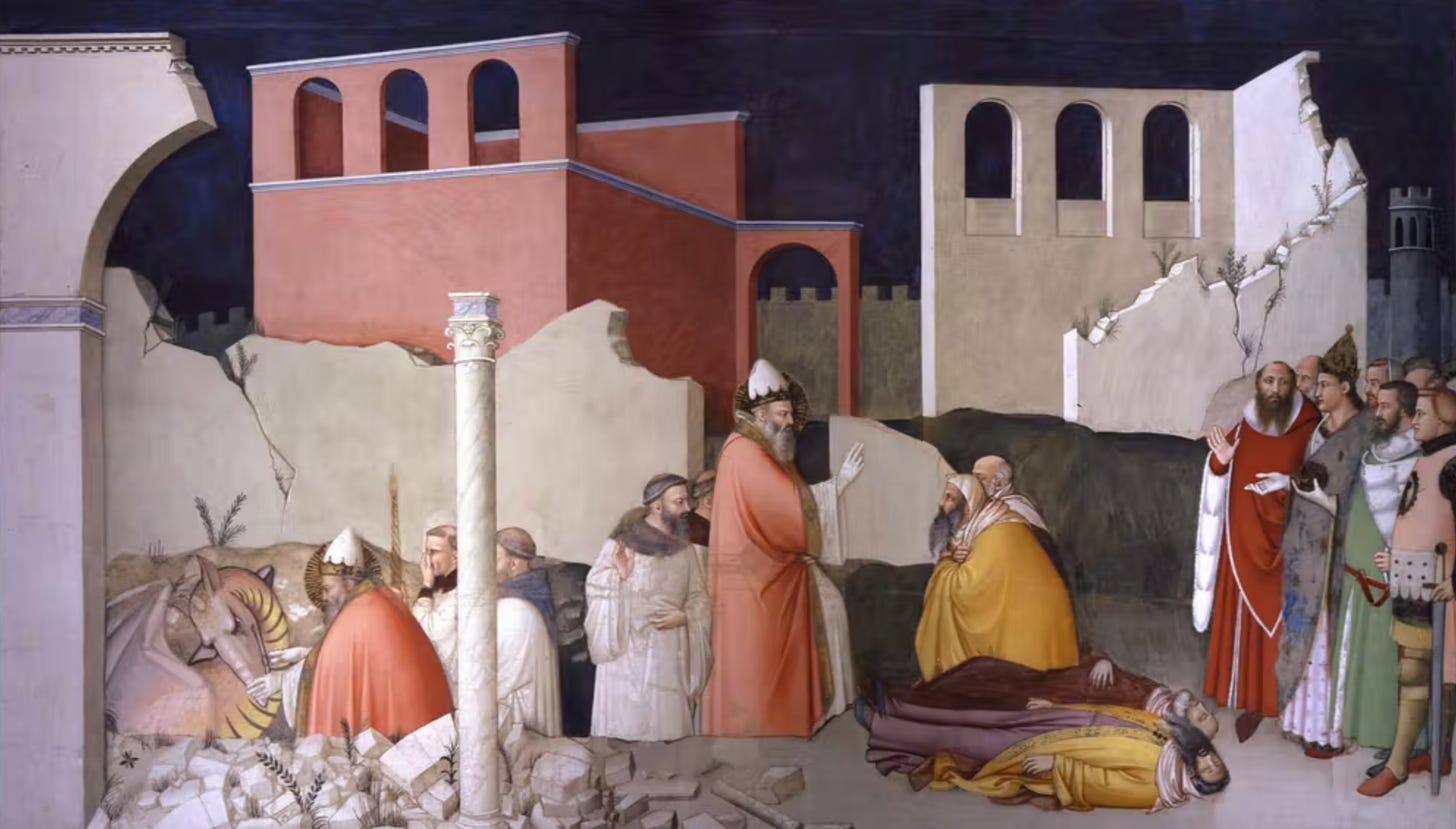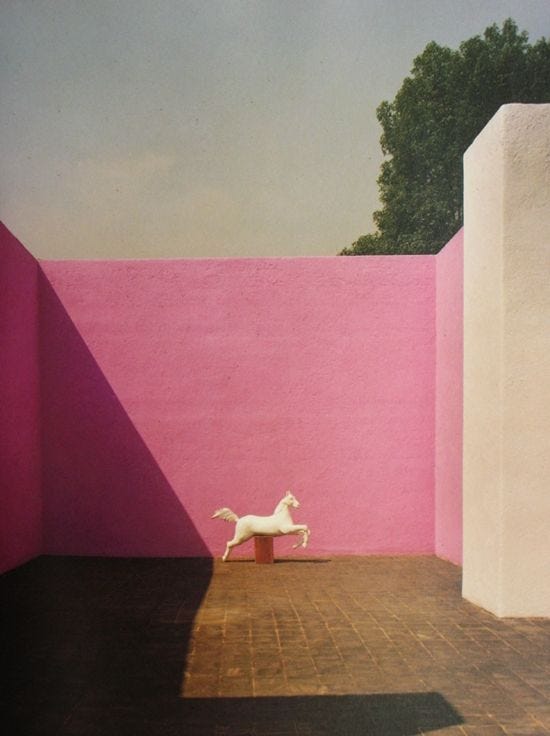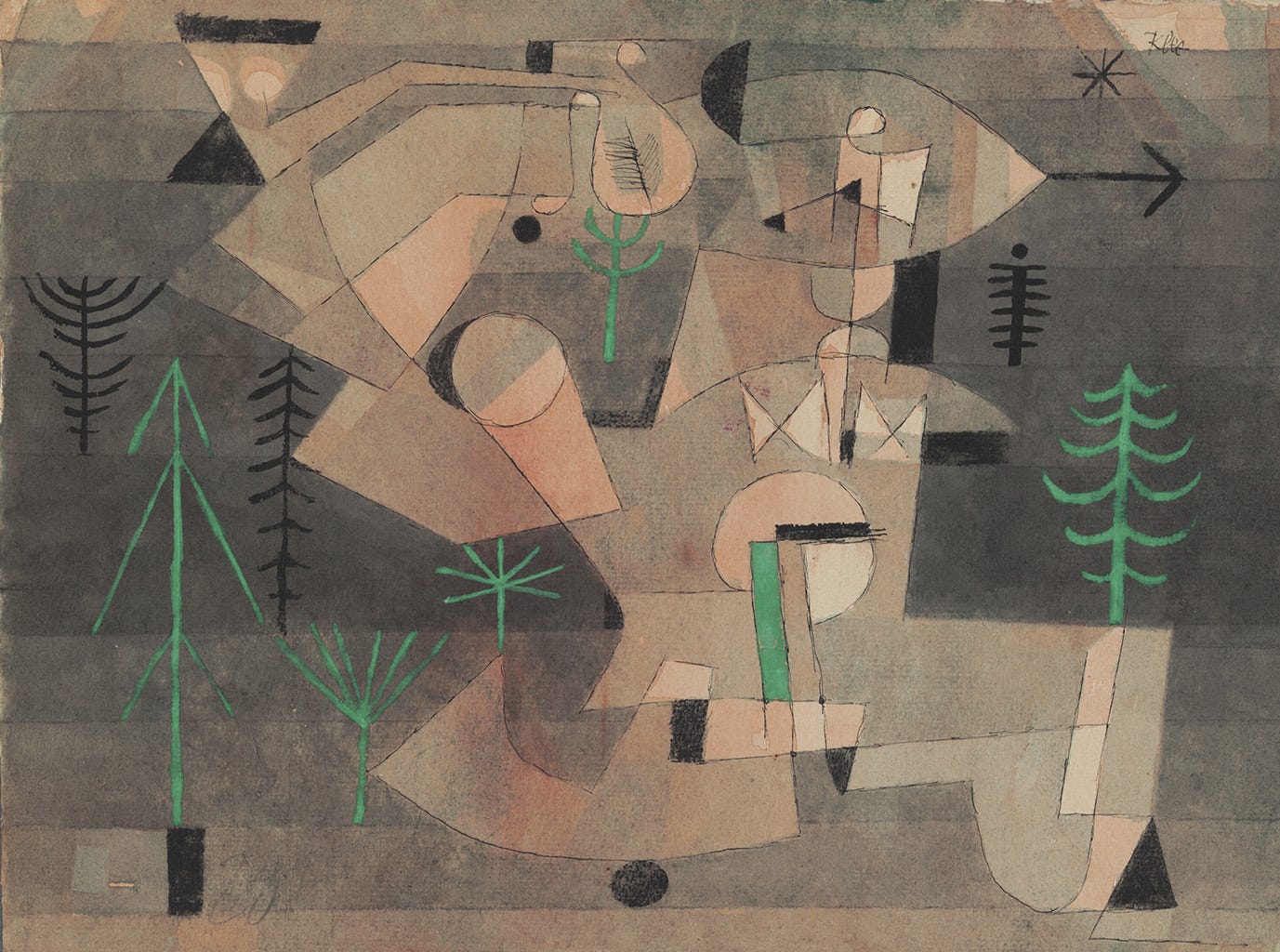God, Onan, Coin
Come innanzi a un giardin profondo io stetti,
Pier della Francesca, innanzi al puro
fulgor de’ tuoi pennelli [...]
— Gabriele D'Annunzio, Elettra (1904)
There are springs of the spirit that come only once. The medieval spring was such a moment, as unacknowledged and reviled in the following centuries as all the better fruits man produces in the struggle against himself are "not without honour, save in their own hometown" (of course, I speak of chronological hometowns), and only recovered by a laggard twentieth-century posterity. And Piero della Francesca, like Dante a member of the chronological diaspora and evader of "periods" had to wait, in Italy, for Gabriele D'Annunzio to compose his verse following a trip to Arezzo in 1903, before art criticism woke up from its bourgeois torpor. It still remains undisclosed to a certain public that insists on not understanding the coherence in the trajectory of art, how so-called "modernism,” which re-evaluated Piero (futurist Ardengo Soffici accosts Cézanne's Gardanne to Ritrovamento delle tre croci e verifica della Croce) was an intimately reactionary art. From the great "theological" season to the onanist season of representation—here is all the art that’s dearest to the masses—which extinguishes its own means while man and artist increasingly take pleasure in becoming prostitute-usurer, modernism was a gust of reaction quite removed from the banal reading of an iconoclastic formalism.
Paul Cézanne, Gardanne, 1885-86. Metropolitan Museum of Art, New York. Piero della Francesca, Ritrovamento delle tre croci e verifica della Croce, detail, 1458-1466. Basilica of San Francesco, Arezzo.
Modernist art is, on the contrary, an attempt at CPR on the aesthetic spectator, so that he may return to that theology of art that precedes the Image—the image that some daimon has perverted from its function of disguise-optical illusion, to appropriate for it an ontological status—the image that had to pass from the vaults of Catholic chapels all the way to cinema in a crescendo of metaphysical depravity that modernism tried to oppose by offering God, the great refugee, an escape route in pure form.
Not even the finest Botticelli, master of the plastic form (dynamic or static as you prefer) reaches the heights of a Piero della Francesca in which figure is liquidated by structure, frozen in the mask of a human time that’s violated by pure composition, and expunged, in which representation scoffs at representing, while still picturing something. Piero della Francesca is architecture: what he really pictures is behind the figures, it is unspeakable and therefore unspoken. And all true architecture is religious architecture.
Piero della Francesca, Natività, 1470-1475. National Gallery, London.
The dawn of modern art in the maturity of the Renaissance marks the beginning of the transition from theology to onansim. All the greatest medieval art is theological art in the apophatic sense—it represents the divine in so far as the divine escapes predication. Its “representation” is an optical illusion. Maso da Banco paints the same divine that in Luis Barragán—architect of the mysteries known only to the spirit of the South—is supremely grazed with the tip of a finger, yet never touched. And one will never understand a Bernini, so "orphically" Neapolitan, without having felt for himself that baroque light which slowly crumbles away in certain inert Southern afternoons.
Maso da Banco, fresco in the Bardi di Mangona Chapel.
Luis Barragán, Casa Gilardi, 1976.
Michelangelo, on the other hand, being situated on the verge of God’s changing into Onan, implores Christ for a sign holding the chisel in one hand and his cock in the other. The seed of illness is already incepted in Michelangelo's greatness. He knows it, and grieves over it in aching poetic composition.
Con tanta servitù, con tanto tedio
e con falsi concetti e gran periglio
dell'alma, a sculpir qui cose divine.
Theology > onanism > terminal phase of onanism in the art academy. That a post office in the nineteenth century looks the same as a church does not testify to the elevation of man, but to the prostitution of God. And the intimate feeling of this tragedy animates the best modernist spirits, already prefigured in William Morris’ medieval fixation, in a Bauhaus that becomes an icon of contemporary modernity, so grossly misinterpreted as the cathedral of “rational” skepsis—the same school that boasted of a pedagogy based on medieval arts and was permeated with spiritualism, from Klee to the didactic eccentricity of Johannes Itten.
Paul Klee, Garten-Plan, 1922. Zentrum Paul Klee, Berne.
Much to talk about for the imbeciles who lament a purging of the noble socialist ethics from the Bauhaus at the hands of Mies van der Rohe, that strange (for the idiot) modernist reader of St. Augustine, Thomas Aquinas, Romano Guardini etc. They do not realize that purging the useful in favor of the sovereignly useless was a necessary operation to transfer the gaze from earth to heaven. And Mies himself will go on to produce his last, supreme tribute to the divine in the construction of a temple, the Neue National Galerie in Berlin, in which art and theology are reunited in the end.
Modernism does not destroy tradition— it tries to fulfill its arc, perishing in the face of finance which initiates, from within art (even more abruptly than from within consumer markets) the process by which the aesthetic spectator, if not humanity itself, will perhaps finally be liquidated by monetary transaction. The future of art as an absolute nothing beyond representation, beyond form, beyond even conceptuality exceeds the ambitions of all apophasis. The modernist utopia was to re-transfer God into art trough the Trojan vessel of the "great form", to crystallize tradition in a new form, and therefore to fulfill its destiny. And every destiny, to be such, must fail to comply with itself in its own fulfillment. Whether one tries to think, or to depict, or to mint God as an NFT, the artist is always a recluse. The dream of a reciprocating audience has vanished—the zoon politikon has finally been disposed of. Language unable to describe Being found itself eager for the Animal and instead found a money-changing porter, longing for his final offboarding into machinery as the last chimera. The kingdom of Heaven will be a stock exchange for trading bots. The artist will continue to monologue.


